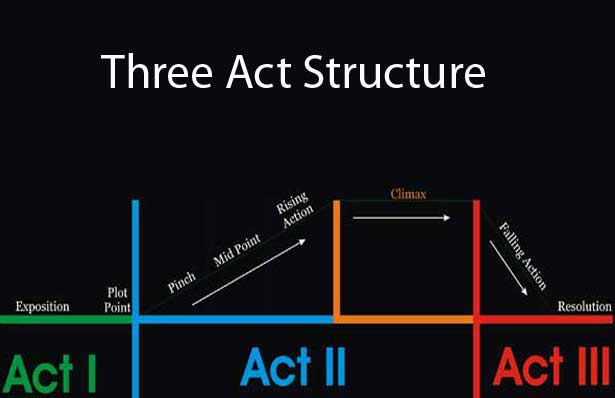
Source: https://writinggoals.com/pimp-my-fiction-free-book
One good place to start is a simple 3 Act Structure where you have a beginning, middle and end with lots of plot points within each act.
Wikipedia tells us this about the classical 3 Act Structure:
1. The first act usually provides exposition, which establishes the main characters, their relationships and the world they live in. Later in the first act, a dynamic incident occurs to confront the main character (the protagonist), whose attempts to deal with the incident lead to a second and more dramatic situation. This is known as the first turning point; it signals the end of the first act and ensures that life will never be the same for the protagonist. It also raises a dramatic question that will be answered during the climax of the story. The dramatic question should be framed in terms of the protagonist's call to action, (Will X recover the diamond? Will Y get the girl? Will Z capture the killer?). This is known as the inciting incident, or catalyst. As an example, the inciting incident in the 1972 film The Godfather occurs approximately 40 minutes into the film, when Vito Corleone is shot.
Practise writing your story’s dramatic question. Better yet, post it near your work space so you’re constantly reminded of its focus. ~ Jessica Page Morrell
2. The second act, also referred to as ‘rising action,’ typically depicts the protagonist's attempt to resolve the problem initiated by the first turning point, only to find him- or herself in ever worsening situations. Part of the reason protagonists seem unable to resolve their problems is because they do not yet have the skills to deal with the forces of antagonism that confront them. They must not only learn new skills but, in order to deal with their predicament, they must arrive at a higher sense of awareness of who they are and what they are capable of which in turn changes who they are. This is referred to as character development, or a character arc. This usually cannot be achieved by the protagonists alone, so they are often aided and abetted by mentors and co-protagonists.
3. The third act features the resolution of the story and its subplots. The climax is the scene or sequence in which the main tensions of the story are brought to their most intense point and the dramatic question is answered, leaving the protagonist and other characters with a new sense of who they really are.
Poke around the internet on this subject because there are lots of good articles that expand on it and give it more depth than shown here. For new writers it is certainly much easier to start with a basic structure that is easy to get your head around. Find more on Story Structures.
Grab your copy free copy of Pimp My Fiction here.
To get your writing in front of literary agents, publishers and film producers.
Enter the awards here: Enter Here


